Tea is a beverage prepared by pouring boiling water over dry processed tea leaves. It ranks as the world’s most popular refreshing drink.
The annual worldwide production of dried tea leaves totals about 7 million tons (6.3 million metric tons). China and India produce more tea leaves than any other nation. Other major tea-growing countries include Kenya, Sri Lanka, Turkey, and Vietnam.
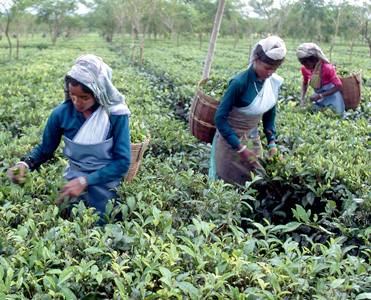
Tea production
Growing tea.
The tea plant is an evergreen that grows in tropical and subtropical regions. The finest tea comes from elevations of 4,000 to 7,000 feet (1,200 to 2,100 meters). The plant grows more slowly in the cool air at such elevations, adding to its flavor.
Tea plants have small, white, sweet-smelling flowers. Each flower produces one to three seeds that look like hazelnuts. Traditionally, tea growers would cultivate new plants from the seeds.
Today, the best method of cultivating tea involves planting cuttings from tea plants with desirable qualities, such as high yield or special flavor, in a nursery bed. From six months to a year later, when the plants are about 8 inches (20 centimeters) high, they are transplanted to the field.
Wild tea plants grow as high as 30 feet (9 meters) or more. But a commercial tea plant is pruned to keep it from 3 to 4 feet (91 to 120 centimeters) high. The plant matures in three to five years and produces a flush (growth of new shoots). Each shoot consists of several leaves and a bud. At lower altitudes and warmer climates, tea plants may grow several flushes throughout the year. At higher altitudes and cooler climates, a plant grows flushes only in warmer periods.
Workers called tea pluckers pick two leaves and a bud from each shoot by hand. A plucker can harvest about 40 pounds (18 kilograms) of tea leaves a day, enough to make about 10 pounds (4.5 kilograms) of processed tea. Mechanical pluckers are common on large tea estates. Each of these devices can harvest as much tea leaf as up to 100 manual pluckers. However, tea of higher quality is generally hand-plucked.
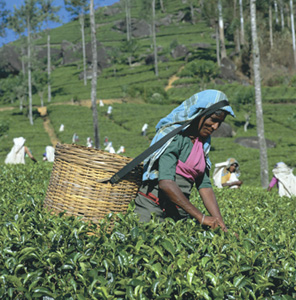
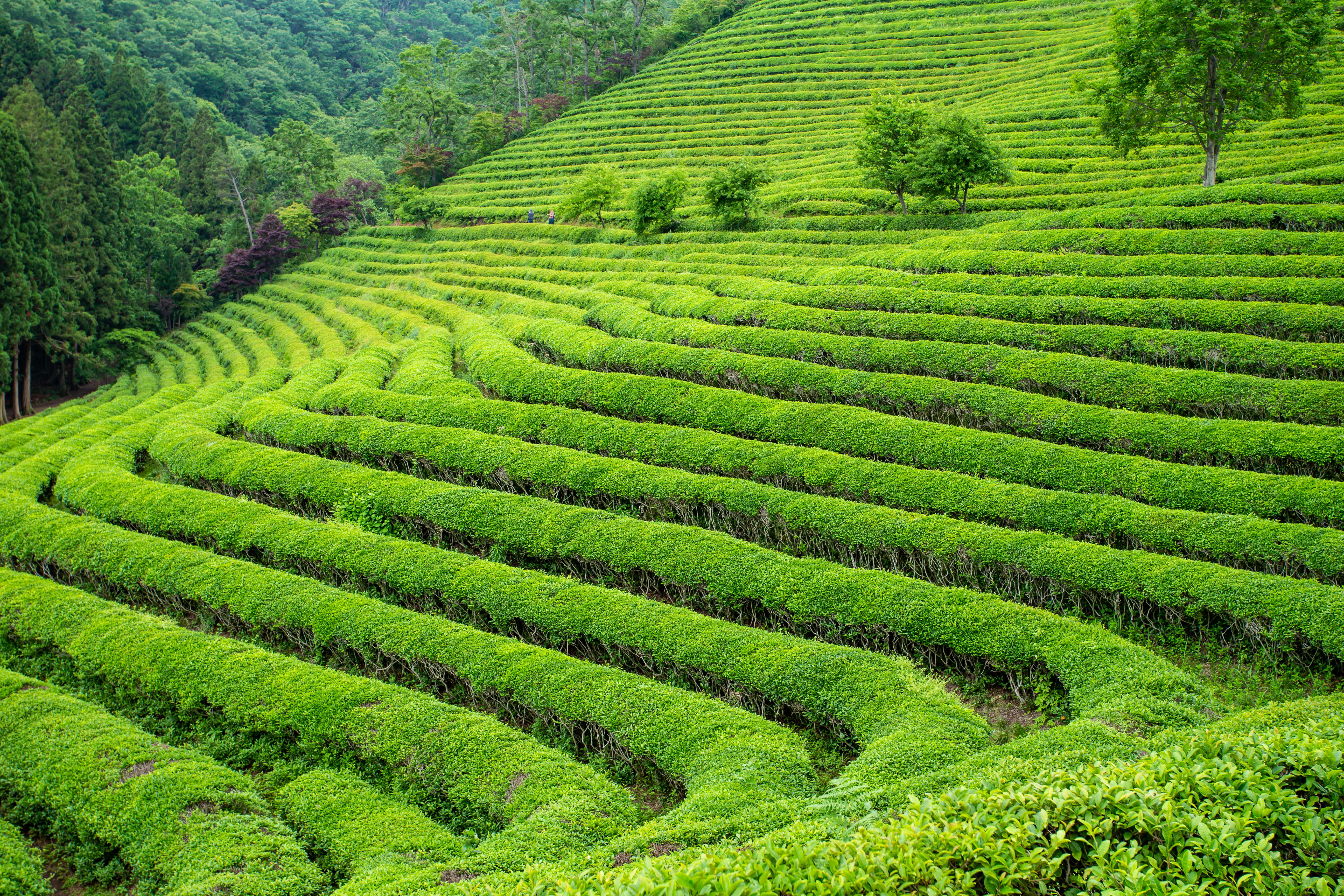
Processing tea.
There are three main kinds of tea: (1) black, (2) green, and (3) oolong. They differ in the method used to process the leaves. Processing takes place in a factory on or near the tea plantation.
Black tea.
To make black tea, workers first spread the leaves on shelves called withering racks. Air is blown over the leaves to remove excess moisture, leaving them soft and flexible.
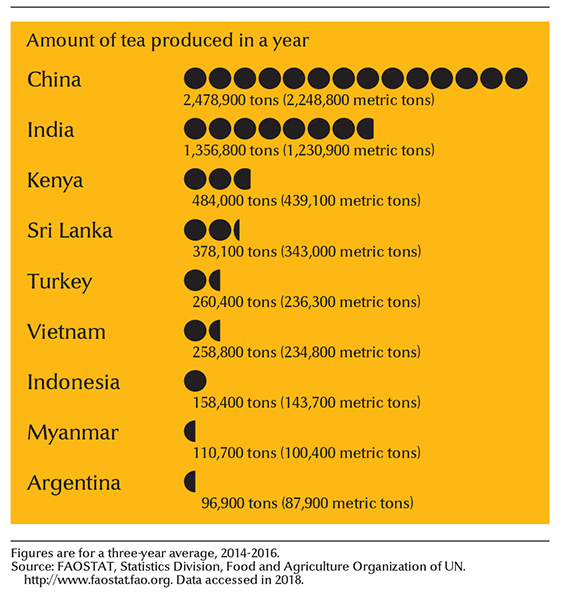
After the withering stage, the tea leaves are rolled and broken into pieces to release their flavor. The leaves may be broken up by the orthodox or the cut, tear, and curl (CTC) method. In the orthodox method, a machine crushes the leaves under rollers, giving the leaves a rolled appearance. In the CTC method, leaves pass between serrated (toothed) rollers running at different speeds. The serrations cut the tea leaves into pieces, and the different speeds of the rollers give the pieces a curled shape. Leaves processed by the orthodox method yield fewer cups per pound or kilogram but have a smoother flavor than leaves processed by the CTC method.
Workers next put the broken leaves into a fermenting room, where they turn coppery in color. Finally, the leaves are dried in ovens and become brownish-black.
Some of the best-known black teas come from India. Darjeeling tea ranks among the world’s finest and most expensive teas, while Assam tea is one of India’s most common. Other popular teas include Dimbula tea of Sri Lanka, used in many English teas, and Keemun tea from China. Popular flavored teas include black currant, Earl Grey, lemon, and mint.
Green and oolong tea.
Most of the green and oolong tea comes from China, Japan, and Taiwan. Green tea is made by steaming the leaves to soften them. Green tea manufacturers use the orthodox method to break up the leaves, or they roll whole leaves by hand. They then dry the leaves with hot air. Because green tea leaves are not fermented, they retain a greenish color. Oolong tea is made by partially fermenting whole leaves. These leaves are lighter in color than those of black teas.
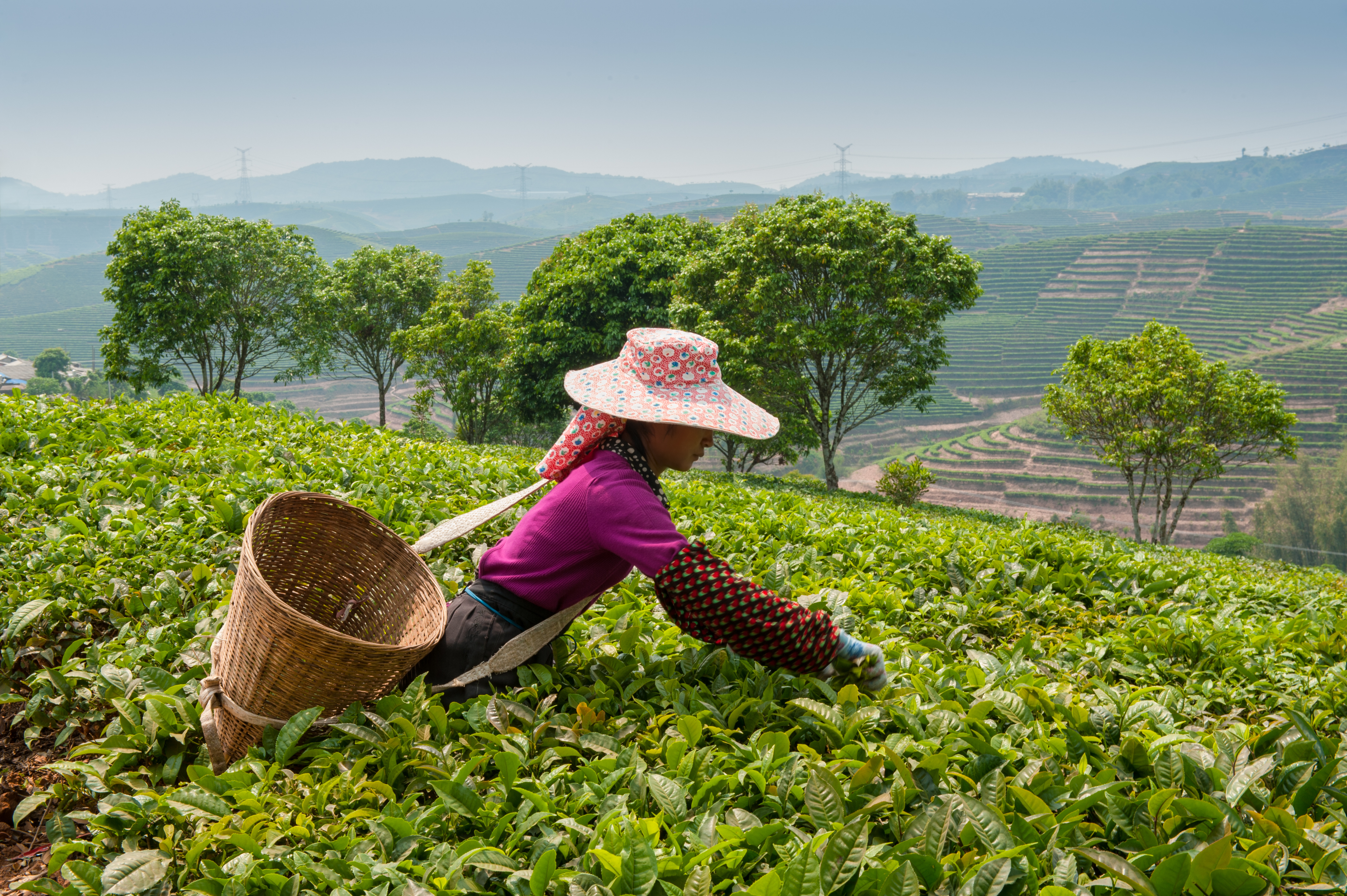
Grades of tea generally vary only according to the size and appearance of the leaves. Except for oolong teas, the grade of a tea leaf has nothing to do with the quality of the tea.
Manufacturers use three different categories of grades for black and green teas: (1) leaf grades for whole and large leaf pieces, (2) broken grades for smaller pieces, and (3) fannings and dusts_for leaves that have been reduced to the finest particles or to powder. Leaf grades include _golden flowery orange pekoe << PEE koh or PEHK oh >> and gunpowder. Broken grades include broken pekoe and flowery broken orange pekoe. Fannings and dusts go into tea bags. Oolong teas are graded according to the quality of the leaves instead of size or appearance.
Instant tea is made by brewing large quantities of tea and then removing the water by a drying process until only a powder remains. People make instant tea by simply adding water to the powder.
Brewing tea.
Black tea is brewed by pouring boiling water over a teaspoon of loose tea, or one tea bag, per cup. Green and oolong teas require lower water temperatures. To obtain the best flavor, black tea should steep (soak) for three to five minutes before being served. Steeping times for green and oolong teas vary from one to seven minutes, depending on the tea.
Iced tea is prepared by first brewing a strong hot tea. For each two glasses, three teaspoons of loose tea or three tea bags should be used. After steeping for five minutes, the tea is cooled and served over ice.
Tea and health
For centuries, people believed that tea possessed healing qualities and used it in folk medicines. Scientists now know that tea contains chemical substances called antioxidants, which may prevent some types of cell damage. Researchers are studying the possibility that teas help prevent heart disease and certain kinds of cancer.
Most teas contain a substance called caffeine, which occurs naturally in the tea leaves. Caffeine is a stimulant—that is, it helps increase the activity of the circulatory and nervous systems. However, some people claim caffeine causes sleeplessness or other problems. Manufacturers make teas without caffeine, called decaffeinated teas, for people who do not consume caffeine.
History
According to legend, the use of tea was discovered by Emperor Shen Nong of China about 2737 B.C. The earliest known mention of tea appeared in Chinese literature of about A.D. 350. The custom of tea drinking spread to Japan around A.D. 800. The first known shipment of tea to Europe was made about 1610 by Dutch traders who imported it from China and Japan. Portuguese traders began shipping tea to Europe about the same time. By 1650, the Dutch were importing tea into the American Colonies.
In 1657, the beverage was sold for the first time in coffee houses in England. Tea went on to become the national drink of the United Kingdom. In 1767, the United Kingdom placed a tax on tea used by American colonists. Colonial resistance to the tax brought about the Boston Tea Party in 1773 and contributed to the American independence movement.
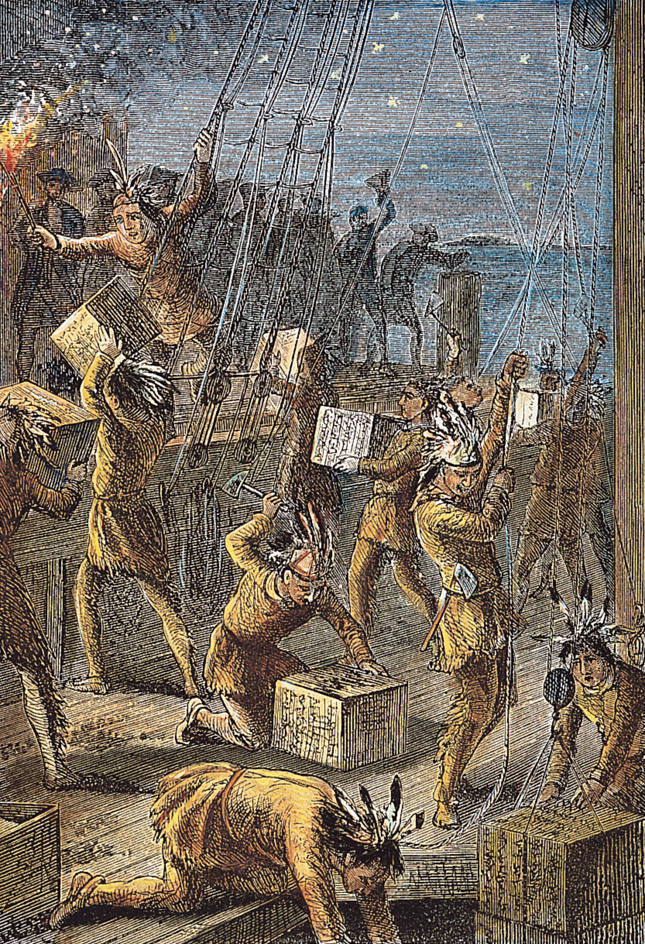
The use of iced tea and tea bags began in the United States. Richard Blechynden, an Englishman trying to increase the use of tea in the United States, first served iced tea in 1904 at the Louisiana Purchase Exposition in St. Louis. That same year, Thomas Sullivan, a New York City coffee and tea merchant, sent his customers samples of tea leaves in small silk bags instead of the usual tin containers. People found that they could brew tea more easily in bags. Instant tea was developed in the United States and first marketed in 1948.
